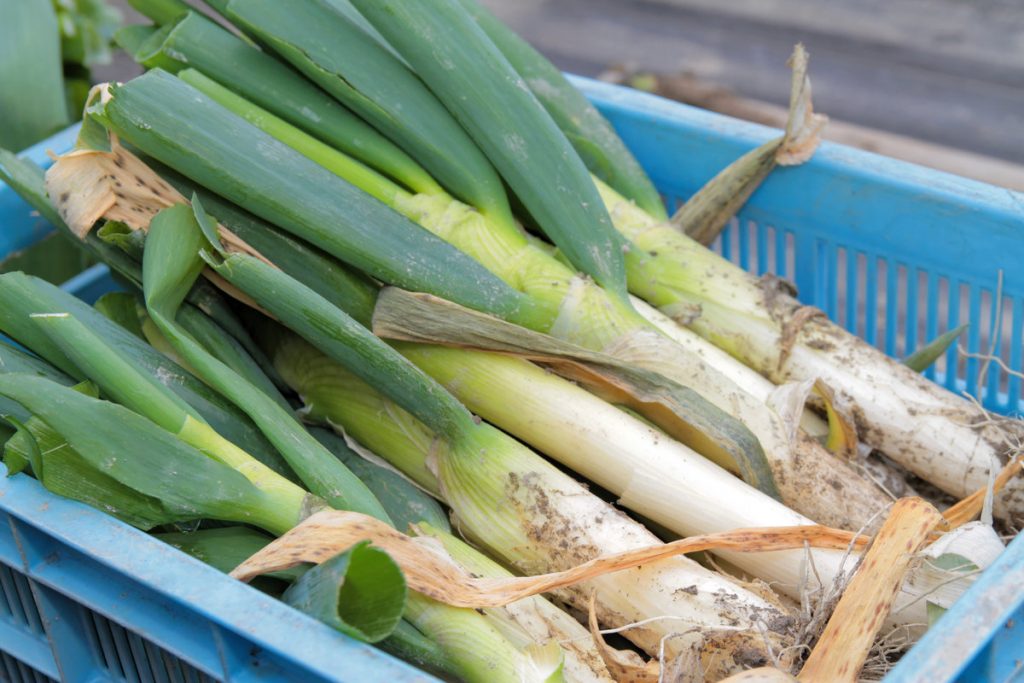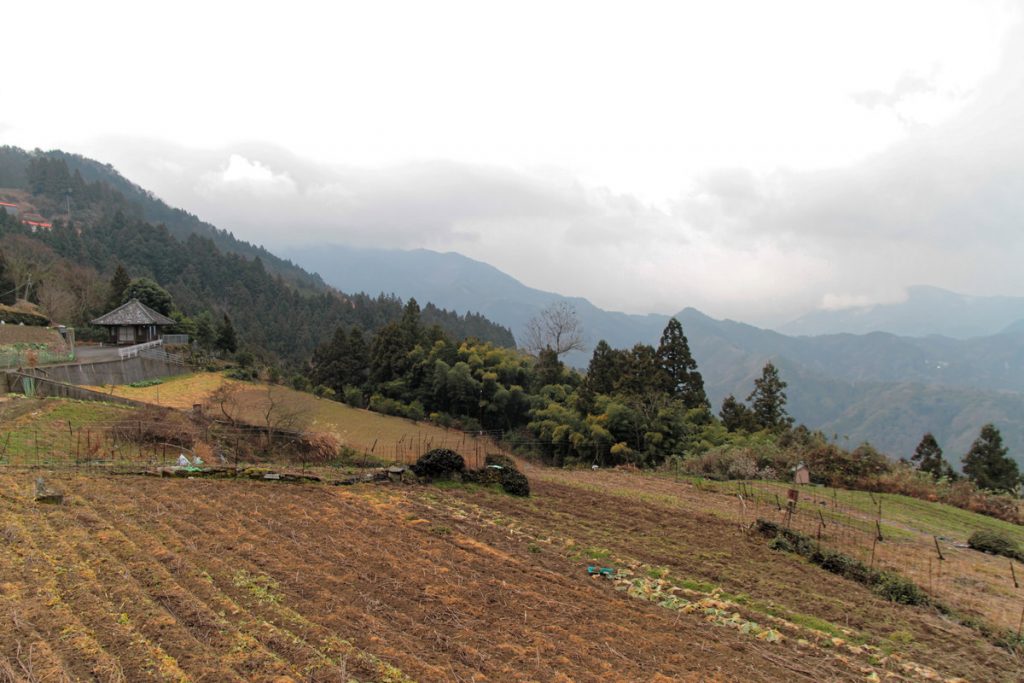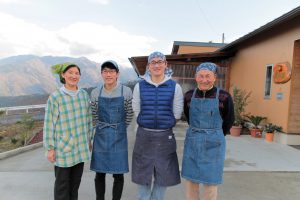
The life on top of the Mountain continued from the Sengoku period. "The food made here is delicious."
Katsuyuki Isogai and Hamako Isogai
(Tsurugi Town)

Isogai family's house is about 400 meters above sea level in the village of Mikidochi. Their surname, "Isogai," reminds me that the sea is strange because they have a house on a mountain, but Hamako said, "Our ancestors migrated from the Miura Peninsula in Kanagawa Prefecture." Looking through the old records, we can see that their ancestors migrated to this area more than 400 years ago. Katsuyuki said, "They were the first people to enter this village, so our business name is "Omoya." My great-grandfather collected the land tax around this area and went to Wakimachi with his sword to pay it in."
Living here has much work to do throughout the year. During the winter, they make dried products such as dried radishes and dried sweet potatoes and processed products such as miso and soybean flour candy. As spring approaches, they plant Goushu potatoes (small-sized potatoes). They are sowing seeds, making seedlings, and planting vegetables. As summer approaches, they sow Takakibi, Awa, and Kokibi and pick green tea. Later, they grow Azuki beans, soybeans, and buckwheat, and in the fall, they produce Hadaka wheat and dried persimmons. In between, they cut Kaya to make "Koeguro" and spread it over the fields.
Hamako said, "As the old people used to say, "If there are hundreds of farmers, we have hundreds of products." We produce almost everything. Everything grown here is delicious, from cabbages to carrots". According to Katsuyuki, the soil is moistened by rainfall without watering, so the benefits of putting kaya in the field are remarkable.
"We put the Kaya in the field so it never dries up." It is ancient wisdom."
Isogai's family also welcomes hands-on educational tours, and they interact with students on school trips from the urban city through farm work.
They strongly insisted, "We need to raise children interested in farming." It is crucial to continue this incredible, Globally Important Agricultural Heritage System.




